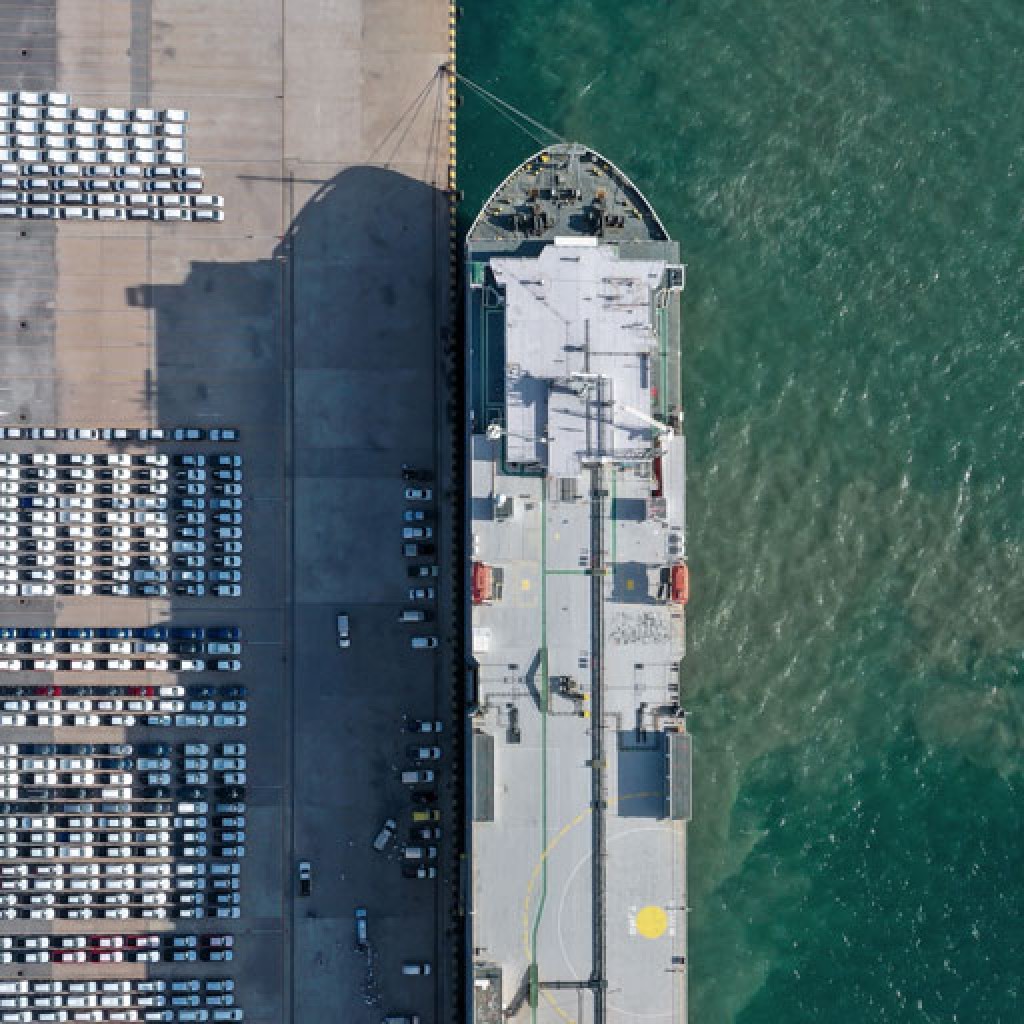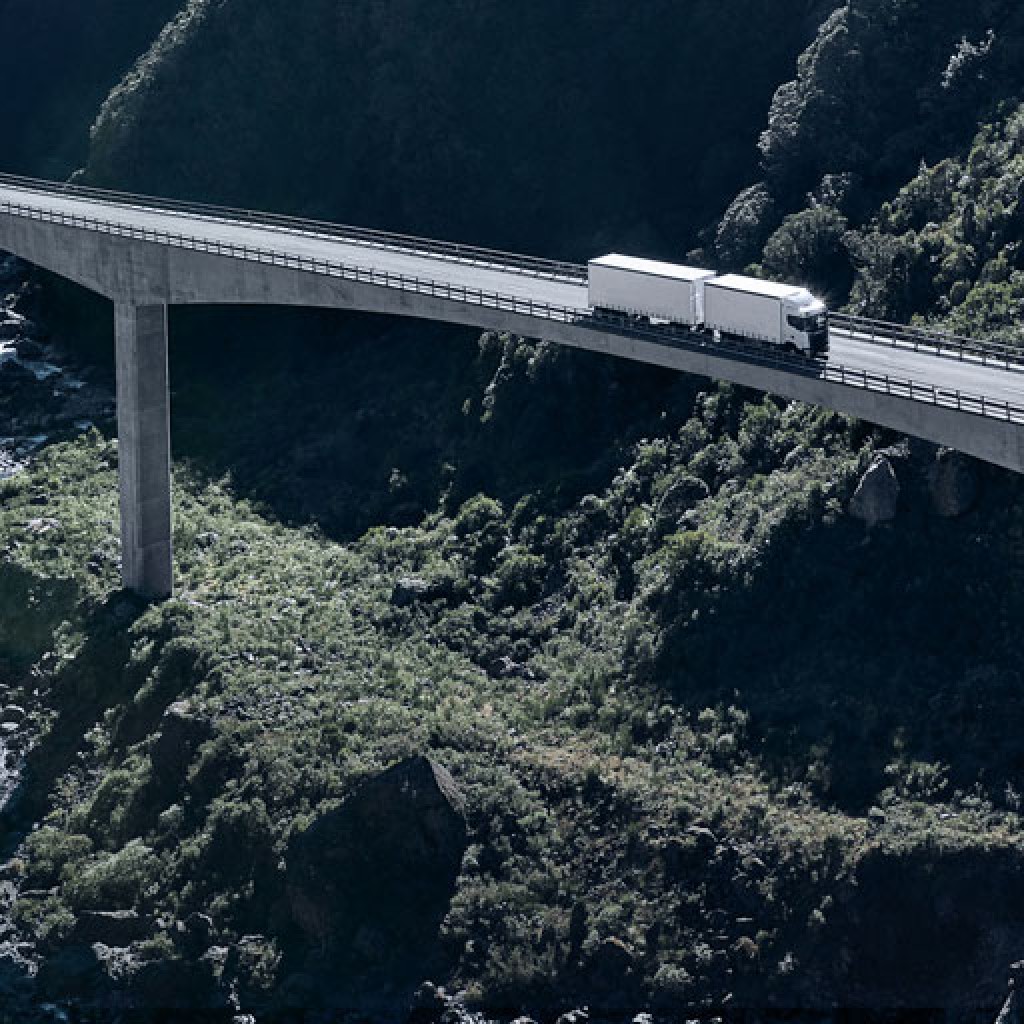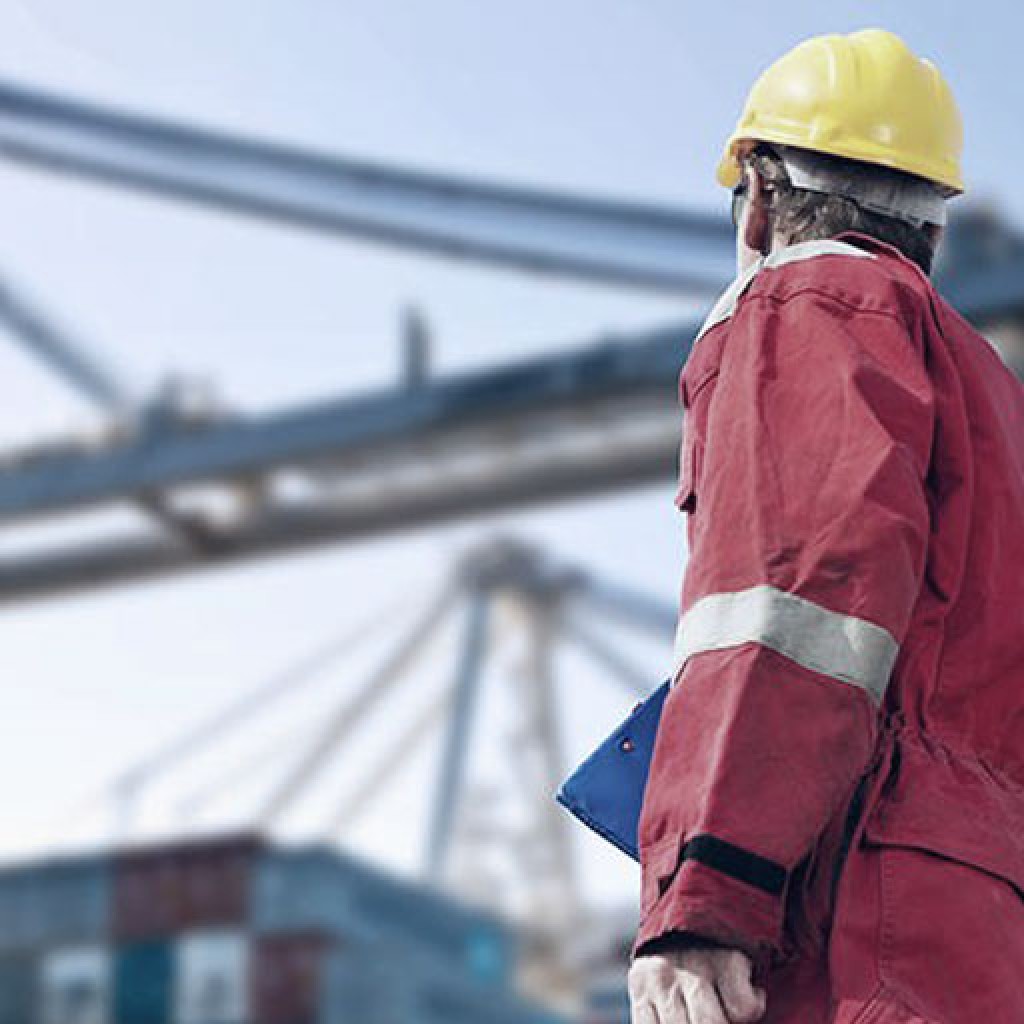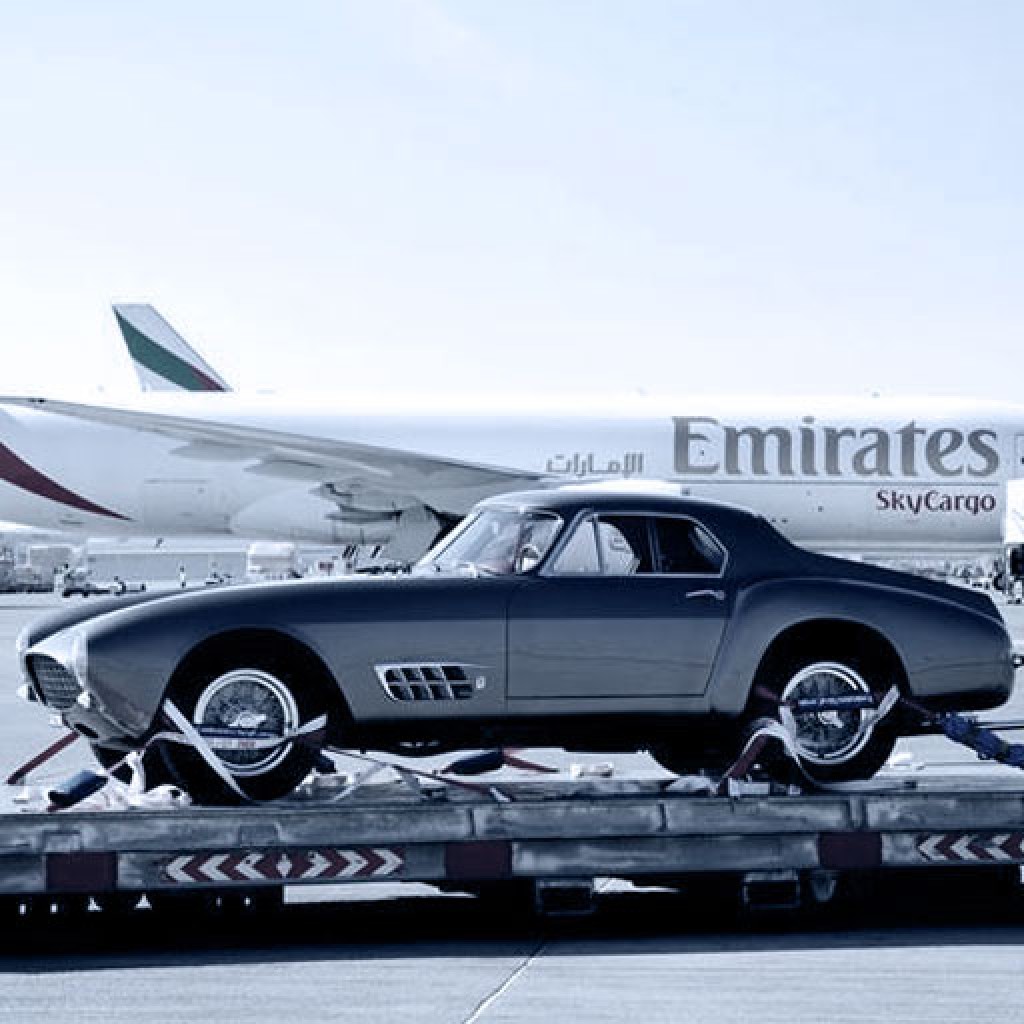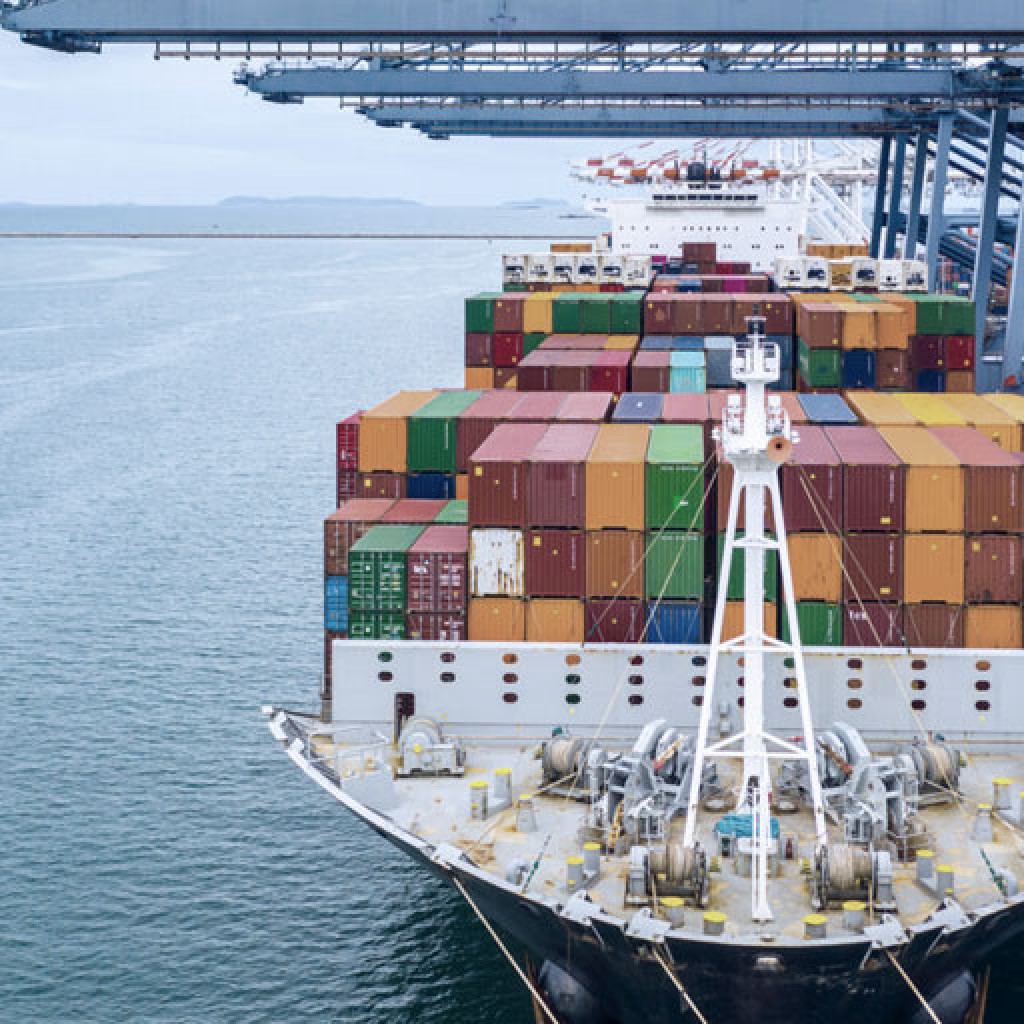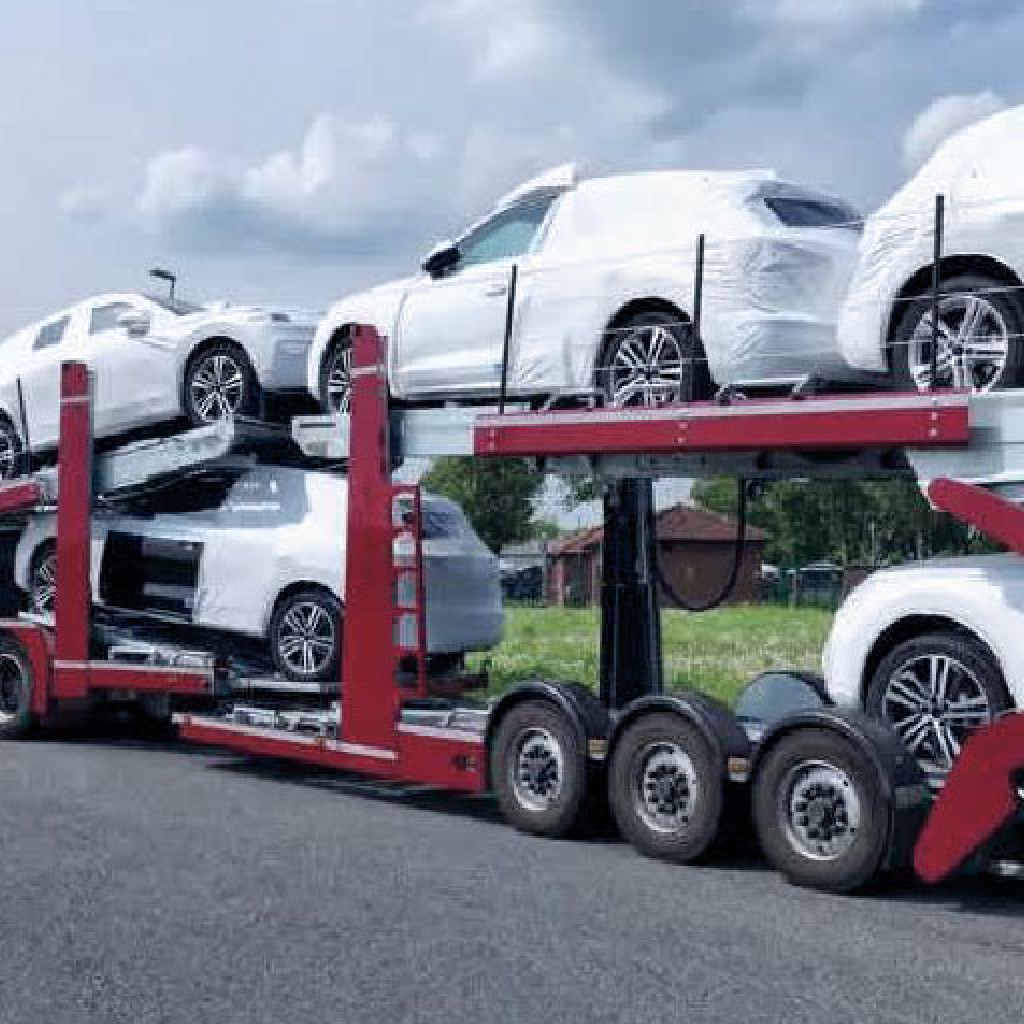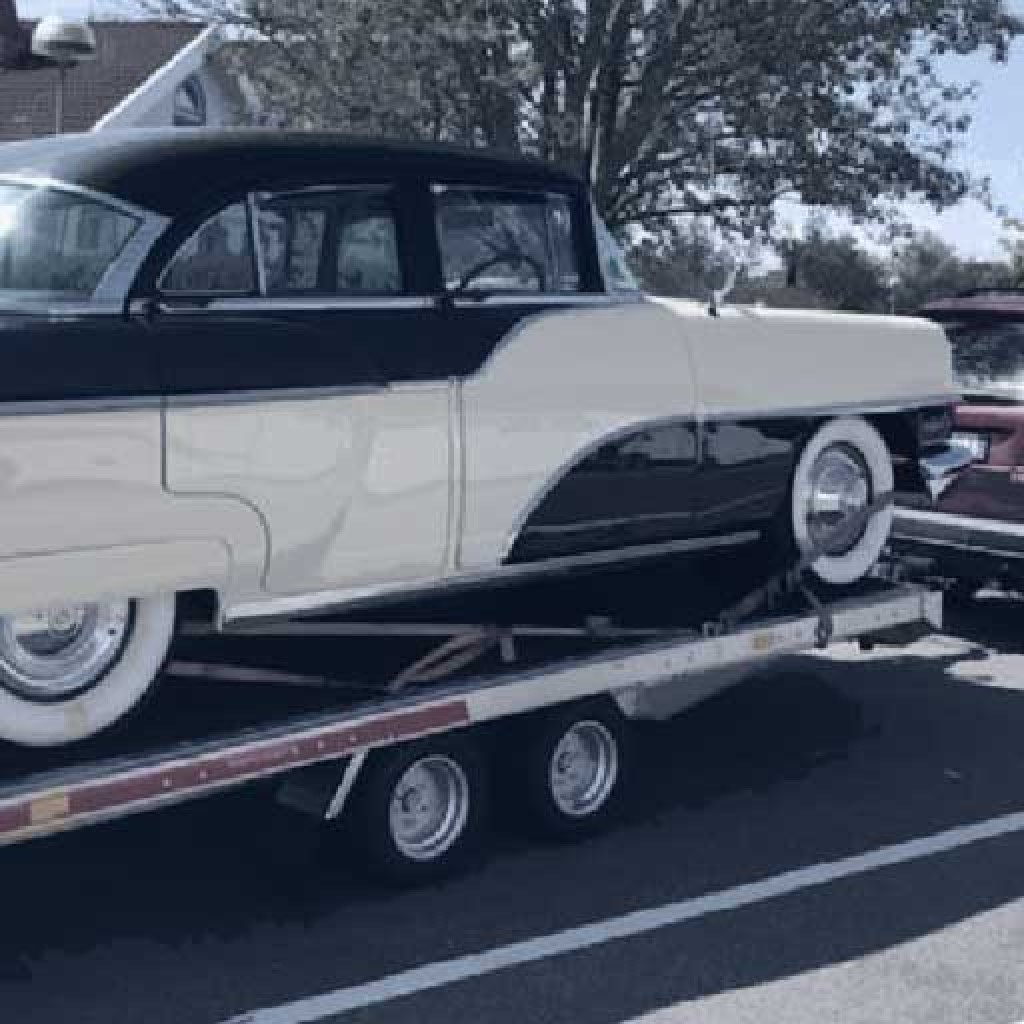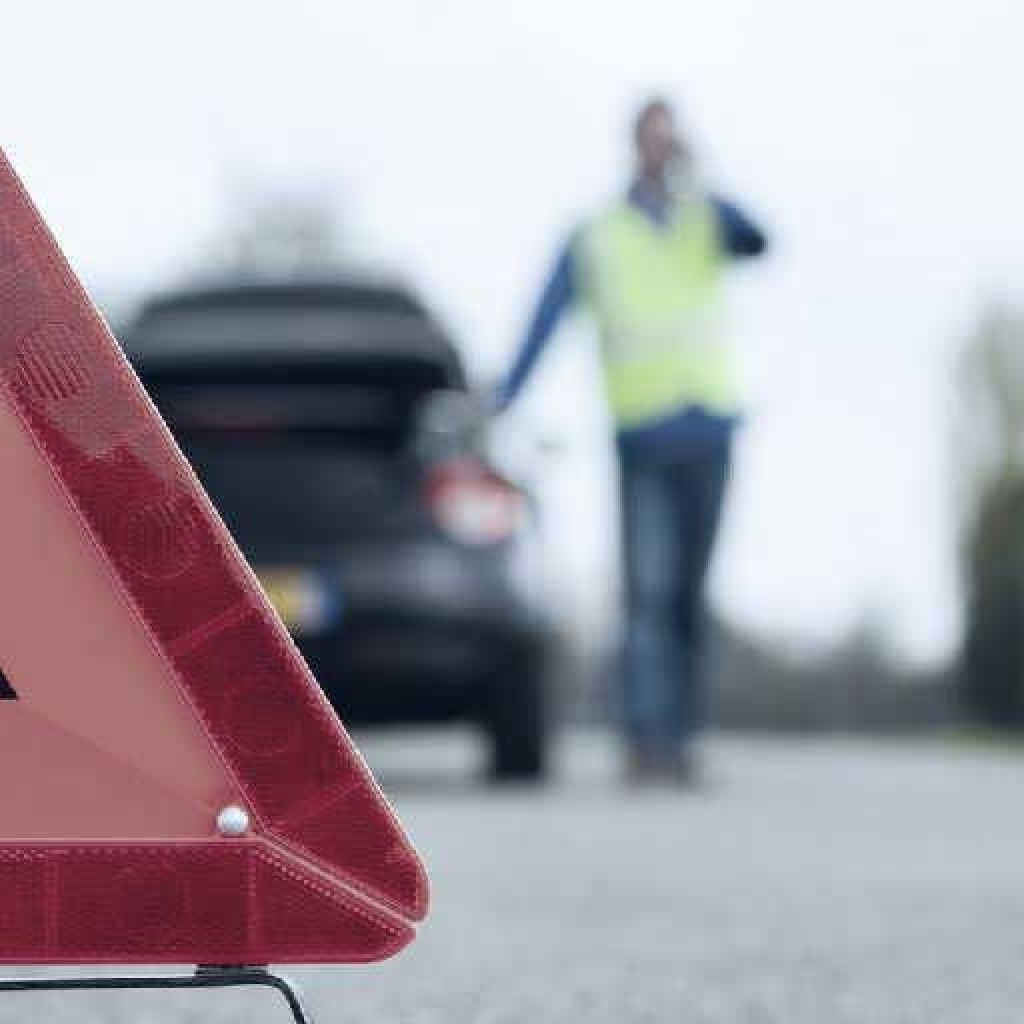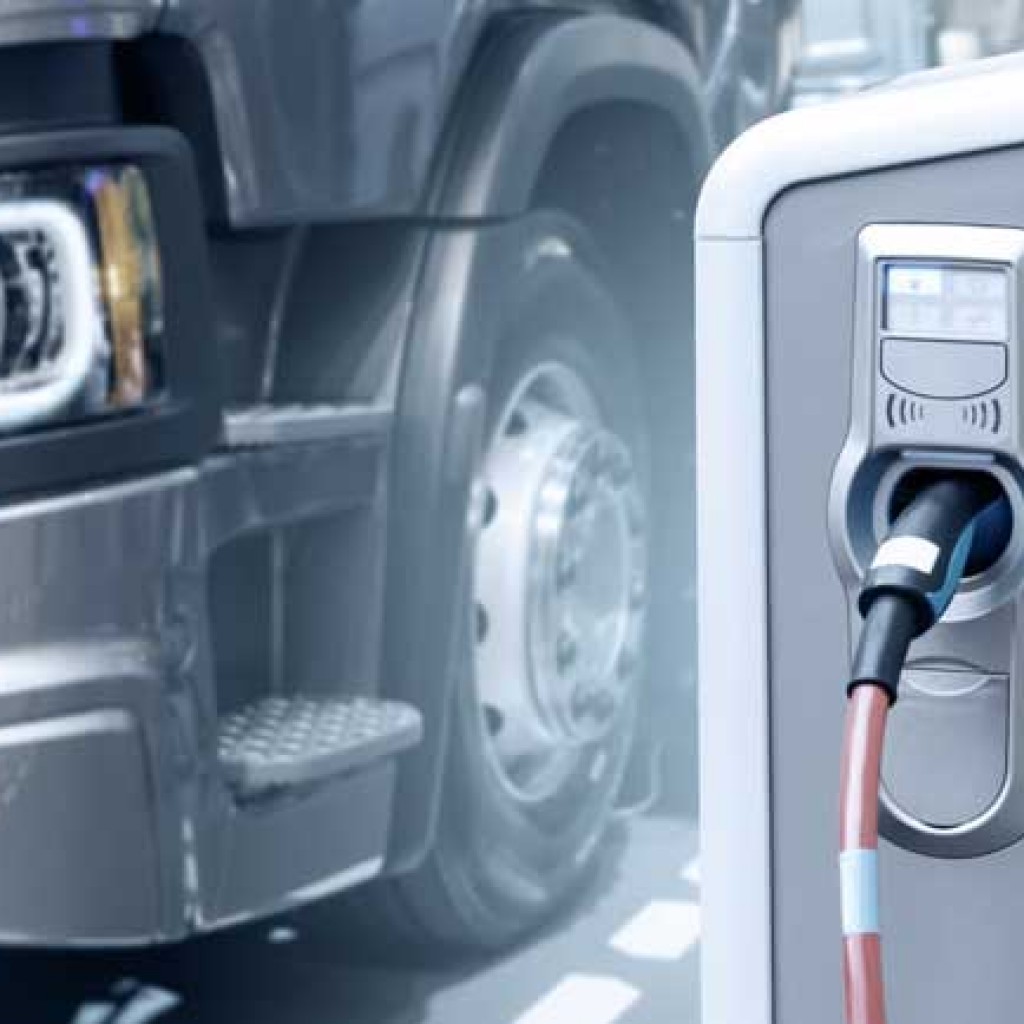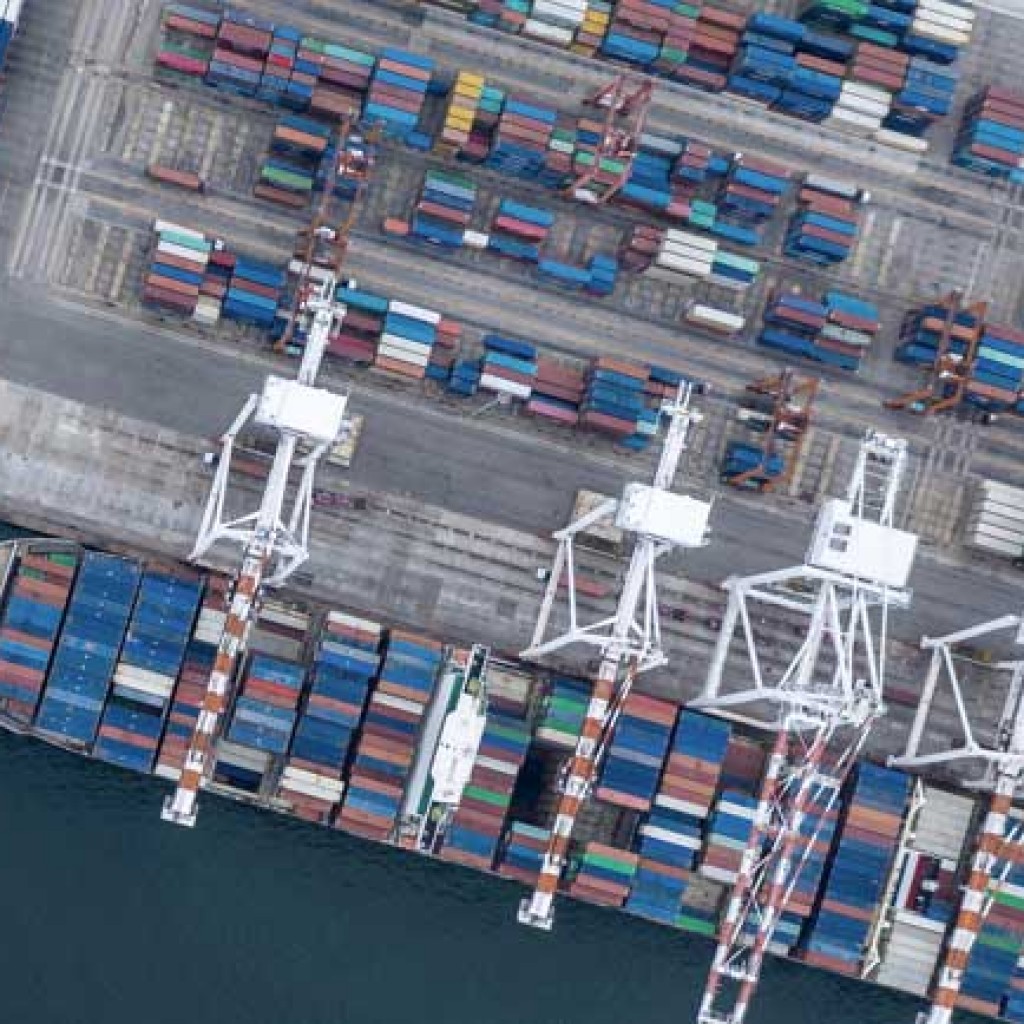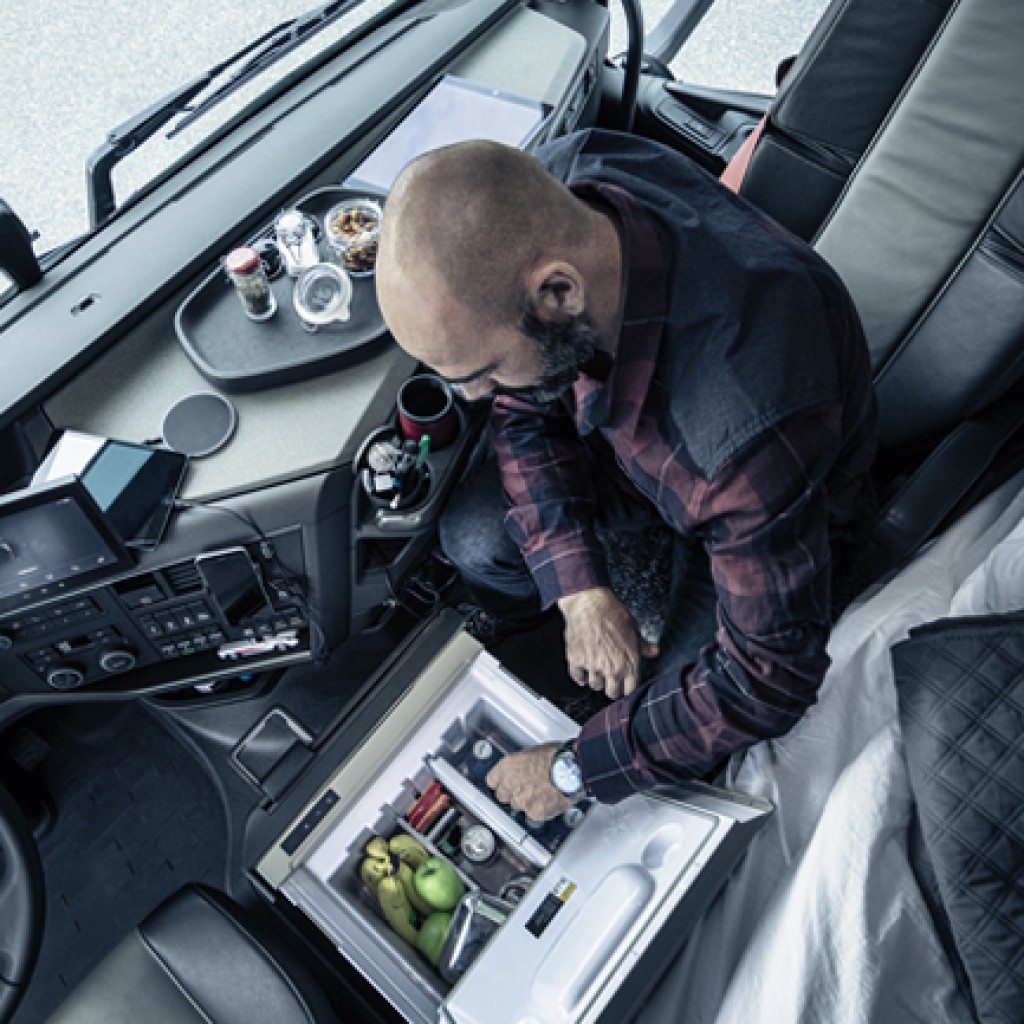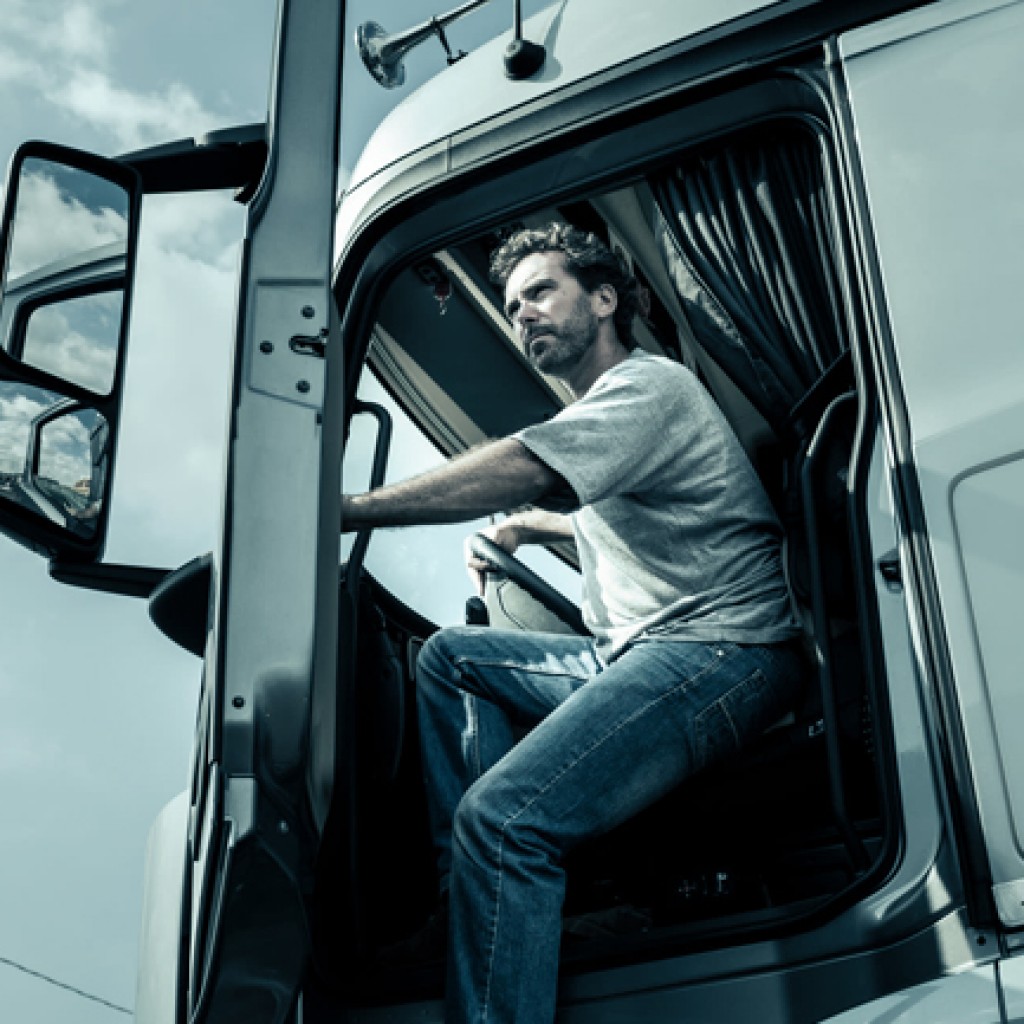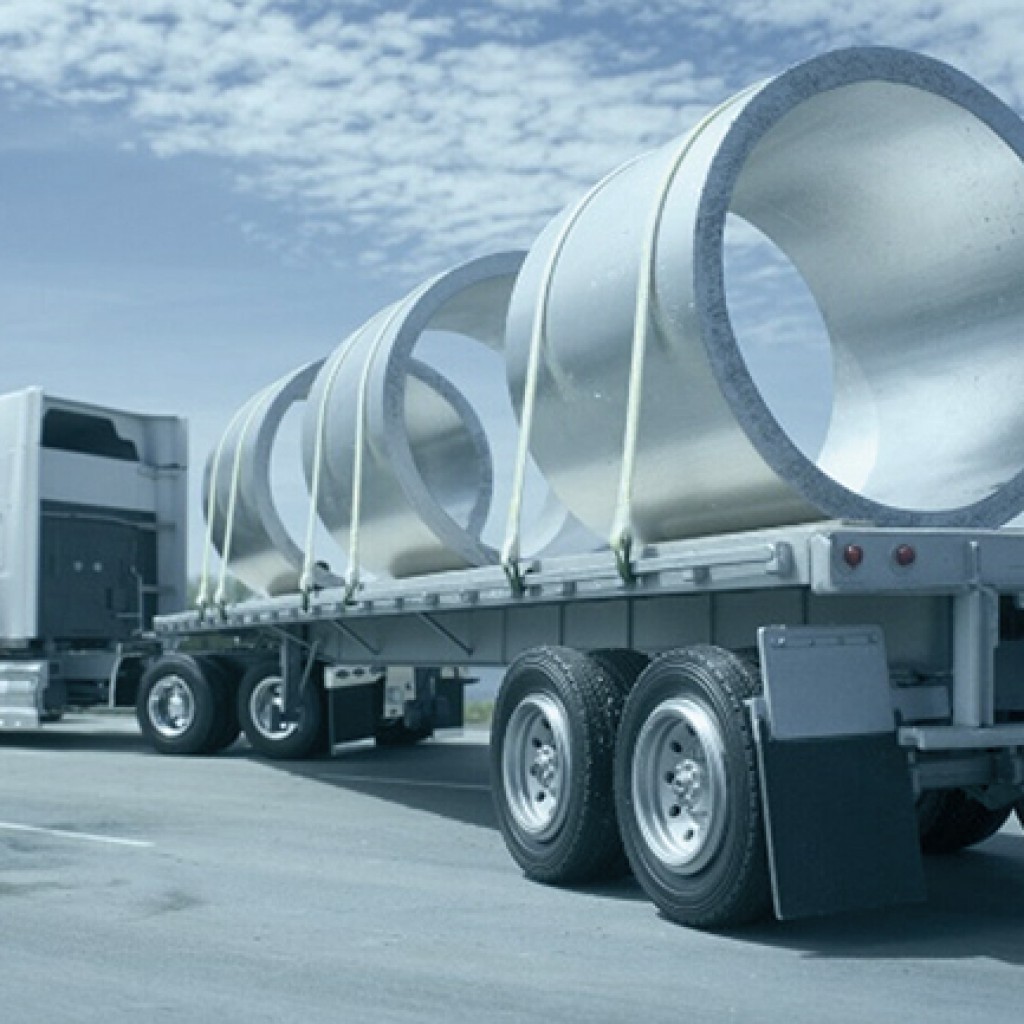We have already dealt with the transport of vehicles in exceptional conditions in another article but with particular regard to exceptional transport. However, it must be specified that, when the truck or load exceeds the size or mass limits established by art. 61 and by art. 62 of the Traffic Laws, we typically speak of the transport of special loads.
Even in these cases it is necessary to pay attention to all the organizational aspects of the transfer, in order to avoid the application of sanctions to the driver, the owner of the vehicle and the client of the transport (for example prohibition to continue the journey, withdrawal of the licence, administrative detention of the vehicle, etc.).
Bulky vehicle transport is an example of special load. That is, a load in which the dimensions of the objects transported exceed the limits established by law. Therefore, in addition to taking stock of the legislation in force, the objective of the following lines will be to provide a practical, clear and immediate guide to those who need the transport service for vehicles or bulky objects.
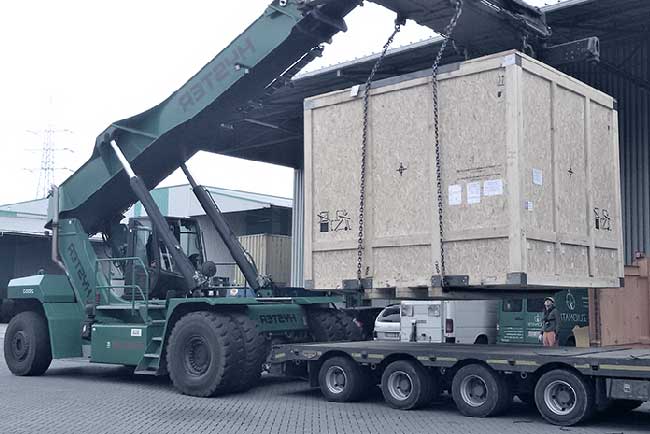
For those who, on the other hand, are still undecided about the category in which the load they need to transport falls into, we have prepared a list that includes some objects and vehicles that require special attention due to their weight and size.
Let's start by translating into simple words the rules of the road that regulate exceptional transport.
TRANSPORT OF VEHICLES AND OVERSIZE ITEMS: WHAT YOU NEED TO KNOW
Road transport is certainly the most widespread type of exceptional transport. On the other hand, it is also the most complex, as it is subject to rather strict rules. We therefore come to the aid of non-experts, extrapolating all the key information from articles 10, 61 and 62 of the Highway Code.
Information that, especially in specific cases, we still recommend integrating with a complete reading of the legislation, for which we provide direct access links.
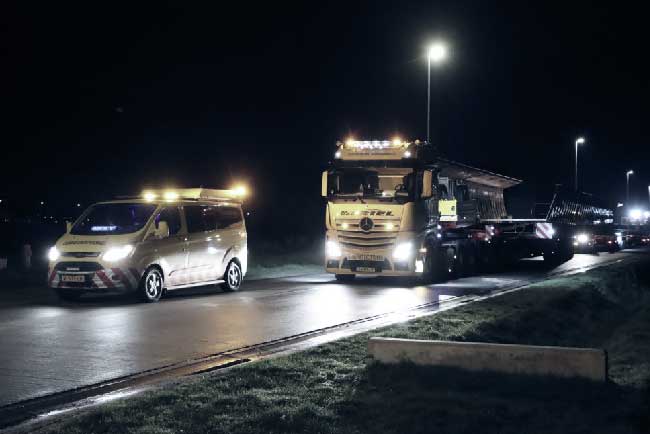
- Art. 10. The main topic is the distinction between exceptional vehicles and transport in exceptional conditions. The transport of vehicles and bulky objects falls into this second category. Specifically, this type of goods is included in the definition, set in the standard, of 'indivisible things'. This refers to the type of goods for which it is technically impossible to reduce the dimensions and masses within the limits imposed by the other two articles without compromising their functionality or jeopardizing transport safety (as specified in paragraph 4). It is, therefore, in this sense that vehicles and large objects are included in the 'indivisible things'.
- Art. 61. The thresholds not to be exceeded are contained in art. 61. It gives the width, length and height limits for the fully loaded vehicle, which correspond to 2.55 m, 12 m, and 4 m respectively. There are, however, specific cases in which the values may vary and for which it is advisable, as anticipated, to directly consult the text of the regulation. In general, the article contains all the information relating to the gauge you need to know in case of transport of oversized vehicles and objects.
- Art. 62. Similarly, the art. 62 deals with what you need to know about the overall maximum weight of a vehicle with a full load. This depends on the number of axles of the transport vehicle and varies from 5 to 10 tons. Also in this case, examining the text of the article (which, among other things, is very short) can be useful for obtaining more precise information suitable for individual circumstances.
Vehicles engaged in exceptional transport are also obliged to travel with all the lights on and to keep those of the directional signaling devices flashing. It is also necessary to have signage panels.
Moreover, the transfer of special loads is subject to time restrictions. To avoid hindering the flow of traffic, movement is in some cases allowed only at night or, on public holidays and days before public holidays, only in precise time slots.
Due to its somewhat sectorial nature, as well as subject to continuous expressive changes, the legislative language is made up of complex linguistic registers even in the simplified version. In fact, regardless of the intelligibility of the words used, the number and abstruseness of the prescriptions cause disorientation in most people.
This is where the professionals come into play. It is still people, but with more skills and years of experience. Perhaps, even just to clarify and simplify the work of those who seek to document themselves to avoid mistakes.
How to ship bulky goods? Here are the steps
Companies that deal with freight forwarding, very often, include exceptional transport among their services. If for the 'classic' vehicle transport, private individuals have the possibility to choose between autonomous organization and delegation to experts (we have spoken of the two options), in the case of transport in exceptional conditions the alternatives are drastically reduced.
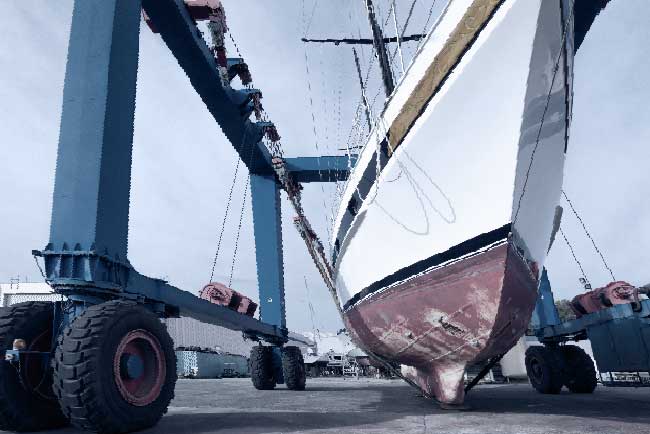
This operation requires, in addition to a deep knowledge of the legislation, the skills necessary to manage the special load and to obtain the release of specific authorisations. It would, therefore, be completely unreasonable to think that a private individual could take care of the transport in complete autonomy.
In addition to performing an act of trust in a company, before entrusting it with the goods, the customer can however carry out a series of actions that contribute to obtaining a safe and customized transport service for vehicles or bulky objects. And that is:
- Establish a budget. Communicating in advance the amount of expenditure that you are willing to incur can help the company propose highly customized solutions right from the start. If, for example, the established budget is not particularly high, the company will avoid informing the customer about the more expensive extra services, rather trying to model the basic package foreseen for transport in exceptional conditions on his needs.
- Calculate the available time. In general, having a clear understanding of the presence of any emergencies, also helps to get an idea of the amount of the final price. Flexibility leaves the company with a greater margin of organization, which is reduced if you find yourself in the position of necessarily having to propose specific dates. If, on the part of the customer, the transport phase is part of a broader planning (for example house move), clearly foreseeing the timing also helps to make the operation more manageable as a whole.
- Choose your destination carefully. Just like the goods and the vehicles that transport them, the places where deliveries take place are not all the same. A destination that is not easily reached by the driver, or which obliges him to make significant detours from the main communication routes (such as highways), affects the price of the service. But also on the general organization of transport, which can be hindered by the choice of locations with a non-optimal position.
- Collect details on the size and type of goods to be transported. In addition to the values mentioned by the legislation, it is important to communicate the state in which the vehicle, object or goods to be transported are at the time of shipment. If, for example, the vehicle to be transported has an accident, before organizing the shipment, the company will have to carry out an assessment of the damage, to establish whether the vehicle can actually be transported and possibly relieve the driver from any type of responsibility. This can also be extended to damaged objects or deteriorating goods.
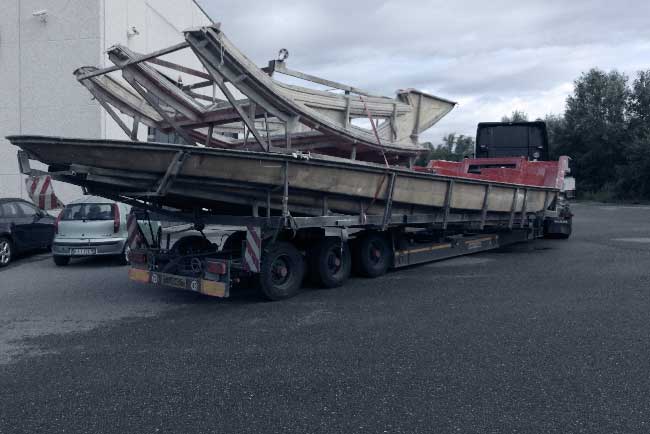
Choosing a budget, determining times and places, making an identikit of your vehicle. Small and simple precautions, which if adopted by those requesting the service, can greatly facilitate the work of professionals, who will return the favour by committing, based on the information obtained, to guarantee the best possible transport experience.
The procedures adopted by the experts, in fact, are not univocal, since there are different types of exceptional transport (and, consequently, a variety of possible solutions).
Excluding the truck, the main alternatives are the train, the ship and the plane. If on the one hand, they prove to be particularly suitable in case of shipments from an intercontinental or even international destination, on the other hand they are bound to the use of an additional means of transport.
From the station, port or airport, the goods will stop over to their final destination. In this case, these will be solutions that will also require a longer execution time than the generic transport of vehicles or goods by road.
Exceptional road transport is, as mentioned, the most widespread. For this reason, it may be useful to talk about the main tasks of the companies that deal with it:
- Request of permissions. An essential part of organizing exceptional transport is the management of paperwork. In particular, for everything related to traffic authorisations. These are issued by the owners or concessionaires of state roads, military and highways or, sometimes, by the regions. There are different types (single, multiple and periodic) and they must be requested electronically at least fifteen days before departure. To the commitment of the request, in cases in which the possibility of damage to the systems (for example road surface) is foreseen for the company, it is added that of estimating the sum of the compensation and paying the contributions relating to the costs of any precautionary technical checks. Or, again, hypothetical works to consolidate the structures. Finally, to avoid administrative and financial penalties, it is important that the documentation is well kept by the haulier.
- Management of technical and traffic police escort. In addition to the authorizations, to carry out the transport of a special load it is mandatory, in some cases, to provide for the presence of escorts, which differ both according to the type of vehicle and the route to be taken. The technical escort, mandatory on certain types of roads (regional, state with three lanes, provincial or municipal with only one lane in each direction), is made up of personnel specialized in the management of risk and danger situations. The traffic police escort, on the other hand, is necessary in all those cases in which that technique is no longer sufficient (such as when the dimensions of the vehicle exceed certain limits). The administrator of the company that carries out the transport has both the task of verifying the dimensions and of requesting the escort. Specifically, the logistics company is required to communicate times, itinerary and distance to the competent bodies and, in the case of traffic police escorts and journeys longer than 200 kilometres, to make the request at least eight days before departure.
It is, therefore, evident that all the actions performed by the company have the aim of guaranteeing the client a safe service that complies with the provisions of the law.
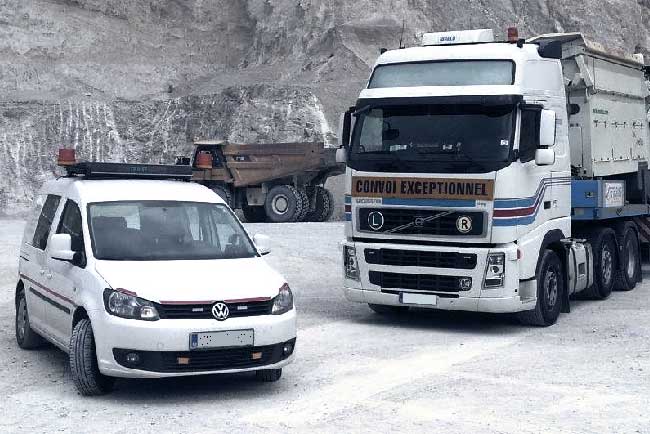
At this point, those who were already convinced that they needed a vehicle or bulky object transport service should have a much clearer picture of the situation.
It is, however, possible, as well as understandable, that one has neither the time nor the inclination to personally verify the measurements and the mass of the goods to be shipped. And, above all, to find out if the service to be booked actually belongs to the exceptional transport category. Given that there is no way to completely remedy the problem except by giving up the laziness, a list of vehicles and objects that fall within the definition of special load can help at least the lucky owners of the bulky goods we have selected.
SOME EXAMPLES OF TRANSPORTABLE HEAVY GOODS
Tanks, wind turbines, concrete blocks, silos, boilers, metal sheets, concrete mixer trucks. In the collective imagination, the transport of heavy goods has almost always a link with great companies, often those who deal with construction. If you think to an object or a huge vehicle, the first image that comes to mind is not that of yourself or that of your neighbour, in the act of organizing an exceptional transport.
And yet, there are many occasions when a private individual might need it. Let's talk about.
Heavy or bulky objects
The necessity to move temporarily or definitively is, undoubtedly, the common denominator which, more frequently, makes it necessary to transport the following objects:
- Pianos. For many, the piano is a long-standing companion and place of inalienable passions, it is an instrument which, unless it is out of order, can hardly be left behind and replaced with a brand new one. The heaviest is the grand piano, which reaches 500 kg. In addition to the size and weight of the instrument, however, transporting a piano is made complicated by the risk of damaging its delicate materials and internal mechanisms. Since the wood on the outside is very sensitive, the humidity level must be between 45% and 65% during transport. The temperature, on the other hand, should be kept between 15 and 19 degrees. For these reasons, it is advisable to schedule the transfer during the mid-seasons or in a period in which rain is not expected.
- Works of Art. In the event of a move (but also for the organization of shows and exhibitions), equally essential, especially for collectors and enthusiasts, is the transfer of works of art from one place to another. In this case, together with the size of the object, the state of conservation and, if the work is subject to protection, the type of packaging required by the Superintendence of Cultural Heritage concerned influences the choices relating to transport.
- Safes. Especially if purchased a few months or years ago, the safe is almost always part of that checklist that is drawn up when one focuses on what to leave in the old house and what to bring to the new one. Its weight, which often exceeds 100 kg can in some cases even go beyond a ton. This implies the inevitable use of equipment that allows the transfer to be carried out in complete safety, guaranteeing the protection of both the goods and the staff involved in the operation.
- Swimming pools. The pool transport service can be particularly useful when you need to move, but not when you have to give up certain exclusive optionals. The size of a private swimming pool varies between 4 and 15 metres.
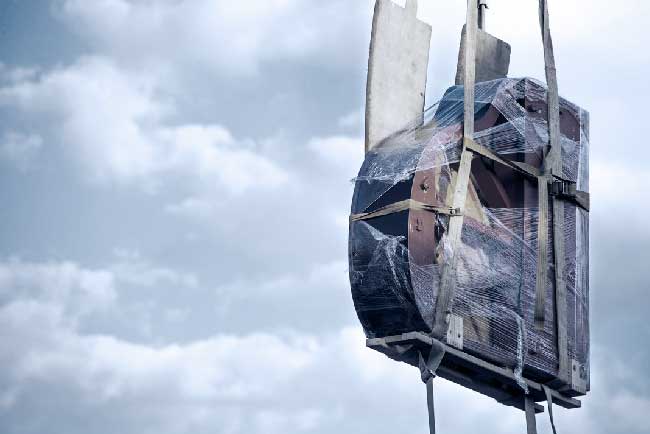
Anyone may need to transport these objects from one place to another, but the list is certainly reductive. To these are added, among others, professional photocopiers, amateur aquariums and large household appliances, together with various other voluminous musical instruments (such as drums, harps, double basses).
Similarly, there are 'non ordinary' vehicles that even non-business owners may need to transport.
Bulky vehicles transport
If, in the first part of the list, the common denominator was moving, the examples we choose to talk about bulky vehicles transport, make us think of the enthusiasm for the summer holidays, of what characterizes every new purchase or, again, of the need to get rid of an old vehicle:
- Boats. Is the destination of the next summer holidays already known and has a boat been purchased for the occasion? Or, rather, do we need to transfer what we already have from one port to another? In both cases, the transport of boats wider than 3 meters and longer than 25 meters must be arranged well in advance. In fact, exceptional nautical transports require the use of special tools and transfer techniques. As well as careful and advance planning of the route to be taken. Furthermore, as in the case of bulky objects, it is essential that the more delicate components are carefully packed. Added to this is the need to empty the tanks, disconnect the batteries and remove the accessories (for example awnings, anchors). Finally, in some cases it may be necessary to disassemble some structural parts (such as mast, bow and sail), to prevent them from being damaged.
- Agricultural machinery. Tractor, trailer, harvester. Whatever its type, those who work with agricultural machinery sooner or later switch from the old vehicle to the new one. Most of the time, in fact, the transport of agricultural machinery is required either when the customer needs to get rid of a disused vehicle or, otherwise, when he has just purchased a new machine. If a scrappage is planned, it's important to make sure you have all the necessary documentation. When, on the other hand, a new purchase must be transported, it is advisable to photograph the state of the vehicle at the time of departure, so as to have evidence of any damage suffered. In both cases, the most used types of trucks are semi-trailers, low-floor trucks and car transporters, the latter used for multiple transport (for which it is advisable to place the most delicate vehicles on the lower deck).
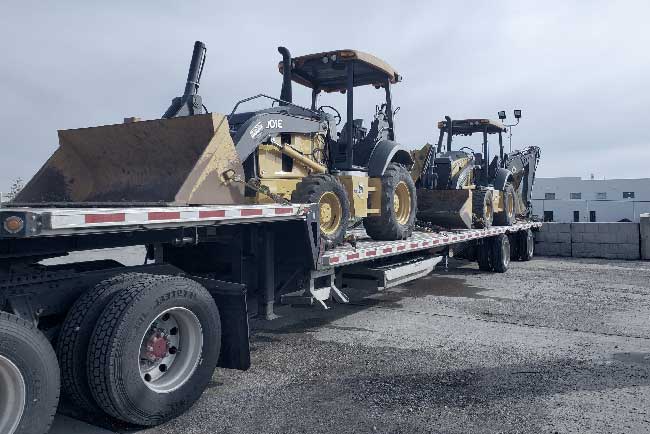
Again, the examples presented do not represent all the possibilities. After forty years of experience, Trasauto Logistica knows it well.
TRASAUTO LOGISTICA’S VEHICLE TRANSPORT SERVICE
The 'Services' page of our site collects all the solutions that we are able to offer both to companies and individuals.
In the specific case of nautical transport, the work carried out over the years for the owners of yachts and luxury boats has allowed us to share with them the fear associated with the possibility that, during transport, the vehicle could suffer damage. Often, to reassure them, we have allowed customers to supervise every single phase of our work, in order to discuss with them the procedures to adopt to minimize the risk of injury.
Similarly, the experience gained in the transport of agricultural machinery has enabled us to understand the needs and fears of those who have chosen to rely on us.
Each vehicle has a value and a history. The goal of the Trasauto Logistica team is to take care of both.
Some examples of national and foreign routes
Needs and fears, values and history. These are concepts so universal that they know no city, regional or national borders. From our historic headquarters, located in Italy, we have satisfied the most diverse requests. Here are some examples of routes:
North Italy
- Venice-Milan Transport
- Verona-Trieste Transport
- Bologna-Treviso Transport
Central Italy
- Perugia-Siena Transport
- Ancona-Firenze Transport
- Roma-Arezzo Transport
South Italy
- Naples-Bari Transport
- Taranto-Reggio Calabria Transport
- Salerno-Lecce Transport
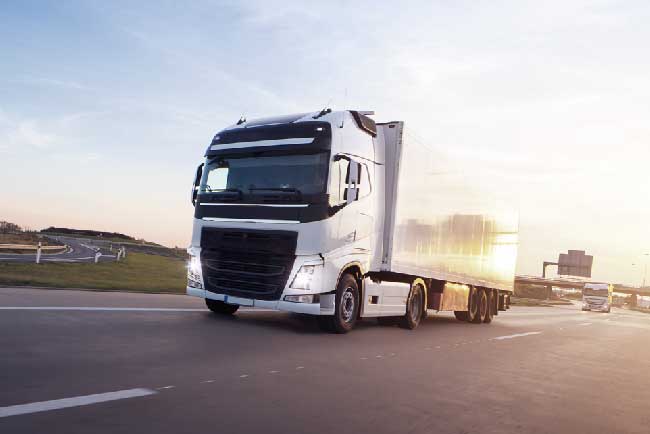
The next goal has been to go beyond the borders. Today, our international transport service covers any area. Here are some of the services we offered over the years:
- Italy-Germany Transport
- Germany-Spain Transport
- Italy-Switzerland Transport
- Austria-Germany Transport
- Italy-France Transport
- Portugal-Latvia Transport
- Italy-Belgium Transport
- Poland-Estonia Transport
- Italy-Spain Transport
If you need to transport objects or vehicles, just fill in our contact form. Our staff will quickly prepare a detailed quote suitable for determining the amount you will have to spend in order for the transport to be completed safely and with the greatest efficiency.
------------------------
Or, for personalized assistance, you can call the offices in Italy at: +39 (0)828 1818161
or request more information also by e-mail: info@trasauto.com
Articles
Related
A MASSIVE SHIPMENT OF CARS ON…
Multimodal transport, in particular for the Italy-USA route, combines road…
EXPORT OF ESCARGOT ON THE FRANCE-IRELAND…
Our escargot transport service, particularly for the France-Ireland route, is…
MOVING A SUPERCAR ON THE FRANCE-MOROCCO…
Our Supercar transport service, particularly for the France-Morocco route, is…
THE TRANSPORT OF MEDICINES FRANCE-FLORIDA. ECONOMY…
Intermodal transport is an extremely flexible and cheap transport method,…
COMBINED FRANCE-CANADA TRANSPORT OF VINTAGE CARS.…
Using the services of Trasauto Logistica, in particular, when you…
INTERMODAL TRANSPORT TO AND FROM THE…
A long and complex journey, from France to America, always…
LUXURY TRANSPORT IN THE MIDDLE EAST.…
Depending on the routes, the timing, the necessary documentation, the…
CAR TRANSPORTER RENTAL FOR VEHICLE TRANSPORT.…
Investigation of the reference market, request for an estimate, vehicle…
PERISHABLE GOODS. WHAT ARE THEY AND…
Perishable goods include short-life food and pharmaceutical products. To avoid…
CAR TRANSPORT, HOW TO CHOOSE AND…
Car transport with car transporters has obvious organizational and economic…
HAVE YOUR ACCIDENTED CAR TRANSPORTED
When collecting and delivering an accidented or non-running car, it…
THE TRANSPORT SECTOR ADAPTS TO RENEWABLE…
When we think of building a more sustainable future, we…
THE TRANSPORT OF THE FUTURE: AN…
When it comes to the transport of the future, a…
MARITIME TRANSPORT. IS IT THE BEST…
In recent years, new technologies and the modernization of traffic…
BEFORE SHIPPING A VEHICLE. GUIDE AND…
To one’s own advantage and to the transporters’ who will…
HEALTHY EATING AND TRUCK DRIVERS. IS…
The importance of road transport for society and the economy…
LUXURY CAR. WHEN THE CAR IS…
The cost of the transport of a luxury car, with…
PROFESSION TRUCK DRIVER. FIND OUT THE…
Over the years, logistics has acquired great importance in the…
SUPERCAR: WHEN LUXURY HAS NO LIMITS
What to do if our supercar should reach a location…
EXCEPTIONAL TRANSPORT: EVERYTHING YOU NEED TO…
Out-of-gauge goods and materials, loads of dimensions and weight exceeding…
Subscribe
Newsletter
Subscribe to our newsletter to stay in touch.

